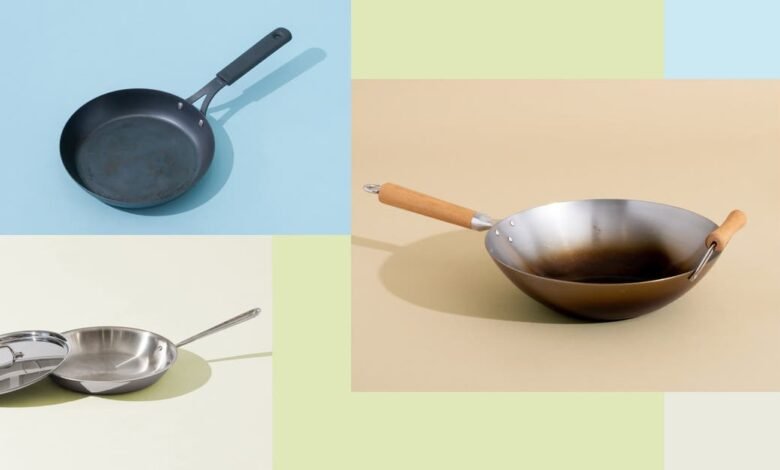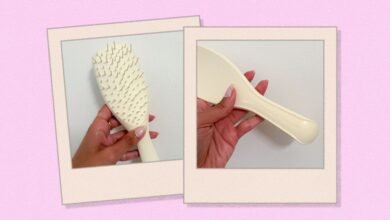Unlocking the Secrets: Choose the Right Pan and Change Your Cooking Forever!

The Ultimate Guide to Choosing the Perfect Cooking Pan
When it comes to cooking, the choice of pan can significantly impact the outcome of your culinary endeavors. With a plethora of options available, selecting the right cooking pan might seem daunting. This guide will help you navigate through the different types of pans, their materials, and what to consider when making your choice.
Identifying Your Cooking Needs
Before diving into the specifics, it’s essential to assess your cooking style. Consider these factors:
- Cooking Techniques: Are you primarily frying, sautéing, or baking?
- Frequency of Use: How often do you cook, and for how many people?
- Dish Types: What kinds of dishes do you make regularly?
Identifying these factors will guide you as you explore the various types of cooking pans on the market.
Types of Cooking Pans
Here’s a breakdown of the most common types of cooking pans you’ll encounter:
| Type of Pan | Best For | Not Ideal For |
|---|---|---|
| Skillets/Frying Pans | Frying, sautéing, and browning | Slow cooking |
| Sauté Pans | Cooking with liquid, sautéing | High-temperature searing |
| Griddles | Making pancakes and sandwiches | Deep frying |
| Stock Pots | Making soups and boiling pasta | Quick frying |
| Roasting Pans | Roasting meats and vegetables | Making sauces |
Key Materials Used in Cooking Pans
Each material used in cooking pans offers unique advantages and disadvantages. Here’s a summary to help you decide which material suits your needs best:
| Material | Pros | Cons |
|---|---|---|
| Stainless Steel | Durable, non-reactive, excellent heat retention | Poor non-stick properties, can cause food to stick |
| Non-Stick | Easy to clean, requires less oil, prevents sticking | Not suitable for high heat, can scratch easily |
| Cast Iron | Retains heat exceptionally well, great for frying | Heavy, requires maintenance, takes time to preheat |
| Copper | Excellent heat conductor, responsive to temperature changes | Requires regular polishing, expensive |
| Carbon Steel | Very durable, can be seasoned for non-stick properties | Heavy, requires maintenance, needs to be seasoned |
Choosing the Right Size
When selecting a cooking pan, size is critical. Here’s how to determine the proper size for your needs:
- Cooking for Two: A 10-inch skillet is ideal for small meals.
- Family Meals: A larger 12-inch skillet or even a 14-inch frying pan works well for bigger portions.
- Specialty Cooking: Consider adjustable sizes like baking pans, which come in various dimensions for different recipes.
Make sure to account for the size of your burners as well; a pan should cover the burner adequately for even cooking.
Assessing Quality and Brand
Investing in a quality pan can make a significant difference not only in cooking performance but also in durability. Here are a few reputable brands known for their quality:
- All-Clad: Renowned for its stainless steel cookware.
- Calphalon: Offers a versatile range, including non-stick options.
- Lodge: Famous for cast iron pans that last a lifetime.
- GreenPan: Known for environmentally friendly non-stick cookware.
While some brands command higher prices, investing in quality can pay off in the long run.
Manual Care vs. Dishwasher Safe
A crucial consideration when selecting a cooking pan is its cleaning requirements. Some pans are dishwasher safe, while others require manual cleaning.
Dishwasher safe: Generally, non-stick and stainless steel pans are easy to clean in the dishwasher but ensure to check if the material can handle it.
Manual care: Cast iron and certain types of non-stick cookware require extra care. They often need to be hand-washed and dried immediately to prevent rusting or damage.
Consider your lifestyle when selecting a pan that fits your cleaning preferences.
Budget Considerations
Lastly, think about how much you’re willing to spend. Pans can range from budget-friendly to high-end. Here’s what you can typically expect:
| Price Range | What to Expect |
|---|---|
| $20 – $50 | Basic materials, entry-level brands, suitable for light cooking. |
| $50 – $100 | Mid-range options with better durability and heat distribution. |
| $100 – $300 | High-quality pans made from premium materials, long-lasting. |
| $300+ | Professional-grade cookware with top-tier performance. |
Final Thoughts
Choosing the right cooking pan can elevate your cooking experience and improve your dishes significantly. Take the time to assess your cooking style, materials, and budget to make an informed decision. Remember, investing in quality cookware is investing in your culinary journey. Happy cooking!





